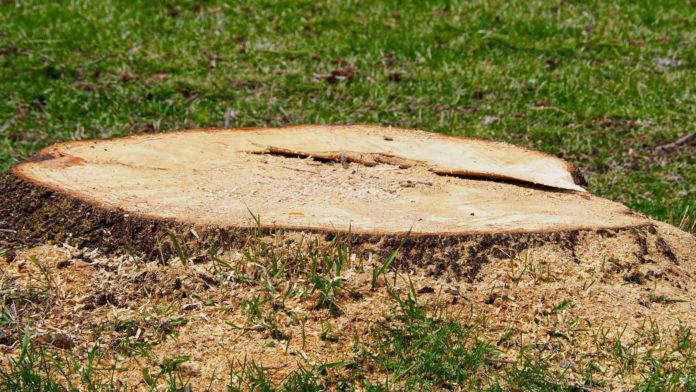Last week was wild. The wind screamed down from the mountains with gusts pushing 50 miles per hour and the massive spruce tree less than ten feet from our back door bent first with grace, and then, as the storm’s fury increased, with a sudden and jarring violence.
The long green limbs acted like a sail in the wind, putting immense pressure on the shallow root system, and we watched the ground on the tree’s windward side bulge up three or four inches with each house-shaking gust.
When I realized what was happening, and how close the tree was to being completely uprooted, I grabbed the truck keys, ran outside and drove one of our rigs across the lawn. I ended up parking the front tires on top of the tree’s roots, hoping that the weight of the engine block would keep the towering spruce upright through the afternoon. Then we vacated our home — no point being inside if a tree came crashing through the roof — and waited for the storm to pass and the winds to die.
My family and I live in Montana’s Flathead Valley, close to Glacier National Park, in a region more reminiscent of the lush Pacific Northwest than the sagebrush flats and dry buttes you’ll find east of the Continental Divide. You wouldn’t think that we’d be seeing more and more wind storms in a region that’s never been known for them — and yet we do.
Then there are the fires. We’re experiencing wildfires like nothing in living memory; huge conflagrations racing through forests desiccated by unnatural heat waves and unholy droughts. In 2017 a wind-driven blaze torched Glacier’s iconic Sperry Chalet. The following year, the video of a father and son trying to escape a massive Glacier wildfire went viral on the web. You don’t need to live here to learn about our wildfires. Just keep an eye on the evening news.
There’s smoke, too, which used to be relatively rare but now comes on an almost annual basis. Sometimes it’s local, from fires in our immediate vicinity. Other times it crosses rivers and mountain ranges and state lines, blowing in from hundreds of miles away. Regardless of where it originates, the microscopic particles fill our air, constrict our lungs, and turn Montana, our “last, best place,” into the last place anyone — or at least anyone with an ounce of common sense — would want to be.
It’s bizarre to live at the base of the Swan Range and watch the mountains literally disappear into the charred vestigial remnants of aerosolized trees and brush. It’s even more bizarre when that smoke comes all the way from California or Oregon and the curtain on our iconic landscape falls to the ugliest of dystopian nightmares.
Of course, whether we’re talking about increasing winds, or bigger fires, or unprecedented smoke — or fish dying, or rivers closing, or forests giving up the ghost — there’s a common thread; one we’ve heard about time and again: anthropogenic (human-caused) climate change.
Which makes me wonder why any politician, of either major party, would stand opposed to a plan that would modernize our electrical grid, build 500,000 public EV charging stations, plug orphaned oil & gas wells that are spewing methane — a potent greenhouse gas — into our air, create a federal Clean Energy Standard, and shift the U.S. away from fossil fuels and towards electric vehicles. That’s what an infrastructure bill based on President Biden’s American Jobs Plan would accomplish. A bill derived from Biden’s plan would revamp our failing infrastructure, put millions of Americans back to work, and create a vital foundation for addressing climate change.
It’s also our only chance to do something serious about the threat we face from climate before the next midterm elections. As Robinson Meyer points out in The Atlantic, Biden’s infrastructure plan is also Biden’s climate plan. Meyer is succinct: “If recent history is any guide, the bill is the country’s one shot to pass meaningful climate legislation in the next few years, if not in the next few decades.”
The author’s wife, Molly McCabe, stands in front of the spruce trees that recent wind storms almost toppled onto their house (photo: Todd Tanner).
We may not realize it, but we’re all touched by climate change on a daily basis. While the increased energy in our atmosphere manifests itself in different ways depending on where we happen to live, we all feel the impacts to our health, our landscapes, and our wallets. With that in mind, and with America’s future economic prosperity at risk, it’s absolutely essential that the House and Senate pass an infrastructure bill based on Biden’s American Jobs Plan. It’s the easiest and most sensible way to kickstart climate action and minimize future catastrophes.
Speaking of potential catastrophes, both our spruce tree and our house survived last week’s storm. The roots held firm under the weight of the vehicle and the tree stayed upright, unlike all the others that have fallen to the increasing local winds.
Sadly, though, that beautiful spruce, along with the one next to it, are now sprawled across our yard. Our arborist told us that they probably wouldn’t survive the next storm, and he took them down before they could crush our little house. In a very real sense, those 80 foot tall trees, like millions and millions of other trees here in the West, have fallen victim to our changing climate. Let’s hope that Congress focuses on climate change in the upcoming infrastructure bill. You don’t have to live here in Montana to recognize that time is running short and the winds of change are blowing.
Please contact your U.S. Senators and ask them to address the threat of human-caused climate change by passing an infrastructure bill with a focus on clean energy jobs and greenhouse gas reductions.
Credit: Source link































